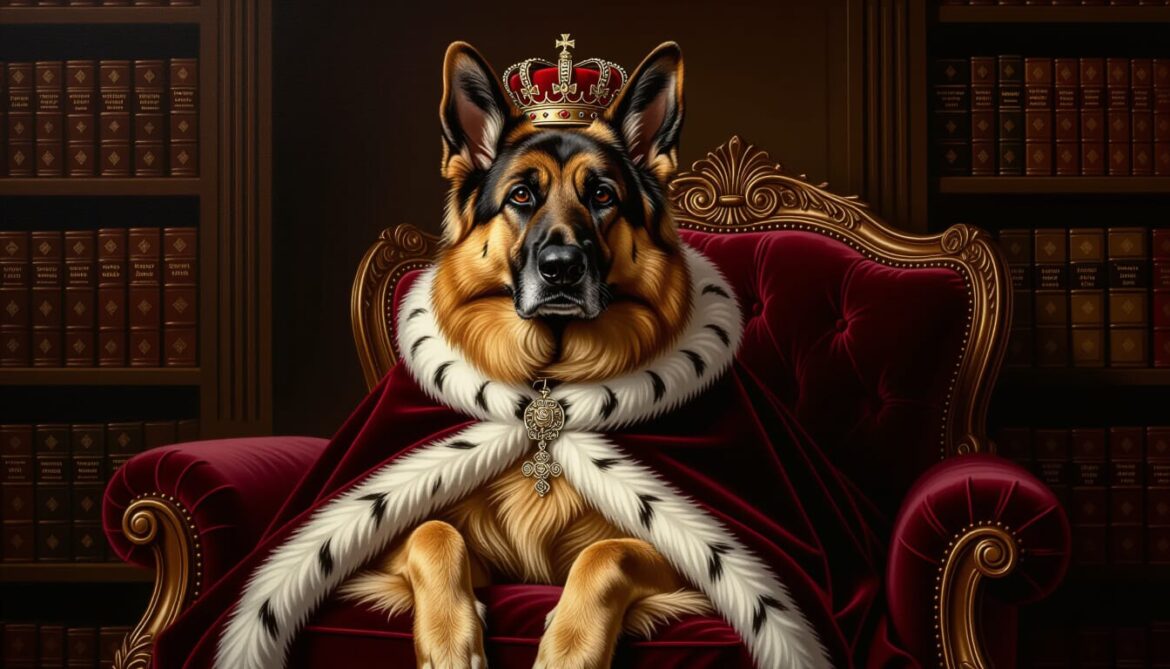The German Shepherd hung in the grand foyer — the only painting large enough to rival Sir Reginald’s. Unlike the others, this one had never been removed, not even for restoration. Its frame was iron-black, etched with Latin inscriptions that had rusted into unreadable scars.
The subject sat regal, poised before the painter’s gaze. The brushwork was sharper than the other portraits, more deliberate, like each stroke had been made by a trembling hand determined not to make a mistake.
Beneath it, the plaque read only:
“Guardian.”
Simon had never liked this one. Even before the strange occurrences began, he swore the dog’s eyes followed him wherever he went. It wasn’t just the artist’s technique — it was the intensity, the weight of those eyes. There was purpose in them. Judgment.
The night after finding the key behind Beau’s portrait, Simon stood before the German Shepherd. The melody upstairs had stopped hours ago, but its echo lingered, pulsing faintly through the floorboards like a heartbeat.
He examined the frame more closely and noticed something new — a faint red mark on the lower right corner, shaped like a thumbprint. The same crimson hue as Beau’s ribbon. He reached for it.
The moment his skin touched the frame, the foyer lights flickered. The books on the shelves in the painting moved. Not much — just enough for Simon to see that they no longer perfectly lined the shelves anymore.
Then, somewhere deep within the house, a low growl rumbled.
Not the sound of a dog. Something older.
Simon stumbled back, clutching the key. The growl grew louder, followed by a slow scraping, as if claws were dragging along the marble floor. But when he turned, the hall was empty.
He looked back at the painting. The German Shepherd was gone.
The books and shelves were also gone in the portrait replaced by what looked like a forest of dark, swirling brushstrokes cut in half by a narrow path winding through its center.
And from that painted forest, mist began to spill into the room — thin at first, then thicker, until it gathered near the staircase like smoke searching for lungs.
Simon followed it, step by trembling step, until he reached the door at the end of the upper hall — the one no key had ever opened.
He inserted the key shaped like Beau’s head. The lock turned.
Inside was a study. Dusty, but undisturbed. The only piece of furniture was an easel draped with a cloth. On the floor beneath it lay a single nameplate, tarnished and broken in half:
“Elise Whittemore — The Final Portrait.”
Simon lifted the cloth.
It wasn’t finished.
The painting showed a young woman — half-completed — standing between two dogs: Beau on her left, the German Shepherd on her right. Her eyes were outlines only, still waiting for color.
At the bottom of the canvas, written in faint charcoal, were six words:
“When she opens her eyes, we rest.”
And for the first time since the house had awakened, Simon realized — the final portrait wasn’t waiting to be painted.
It was waiting to be completed.

